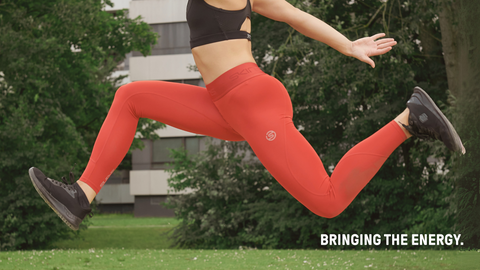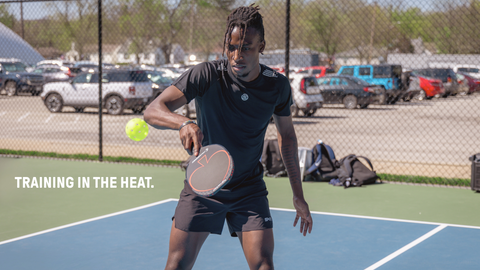SKINS Head Running Coach, Joshua, discusses Lower Leg Strength.
Lower leg strength is crucial for runners. Not only does increased leg strength help with your power, but it also helps with your ability to deal with training load and stay injury resistant. One of Joshua’s coaches once explained to him that if your heart and lungs are your engine, then your legs are the parts that keep it all running smoothly and help the car stay in one piece. If your legs don’t work correctly, then it will impede your running. Running is a very repetitive movement that can result in us creating imbalances and areas of weakness. Even the best runners in the world don’t activate all the muscles in their legs. By incorporating some strength training into your weekly plan, you can ‘switch on’ the muscles you don’t usually use and make sure they don’t become ‘switched off’. In theory, this ensures everything in your lower legs is in good working order and enables you to run more consistently.
IMPROVING LEG STRENGTH
When looking at improving leg strength with runners, the exercises you do must be particular to running. Many movements within the strength and conditioning circles don’t have much transference into a running gait. For example, Back Squats where you have two feet on the floor, feet shoulder-width apart and turned outwards don’t replicate the running movement. That’s not to say you shouldn’t be back squatting at all as a runner, but it is essential to make sure you tailor your strength work to have as much transference as possible.
The most important thing is ensuring an athlete has good balance and coordination before building in lots of strength work. Again, in a running context, you wouldn’t start training with interval runs after a break! Ensuring that you can comfortably support yourself do exercises on one leg replicates the running movement. In addition, it ensures that you can account for any differences in leg strength, so both legs take the same amount of loading. The last thing you want to do as a runner is start building a strength routine into your training to help you become more injury resistant, then pick up an injury due to imbalances of strength!
Just like with your training volume, start small and build up from there. If you haven’t done any strength training, start with some basic coordination and balance exercises. For example, practice standing on one leg on the floor; you’d be surprised how hard this is! You can then progress to then holding this on something such as a wobble board. This exercise can then move into single leg squats or split squats. Remember to maintain control and not overwork your muscles too quickly as you want to make sure you can get your runs in the next day. With strength training, anything you do mustn’t impede further running sessions. If you cannot complete your reps session the day after you’ve done your lower leg session, we would question whether you have suitable training sessions prioritised during the week.
MAINTAINING THE CORRECT TECHNIQUE
Maintaining the correct technique and form whilst doing strength exercises is also vitally important. Taking the back squat as an example again, you activate different muscles by completing the exercises in different ways. The further your feet are apart, the more activation there is in the extrinsic muscles of the hip and glute. Not maintaining a strong core will result in your back becoming bent, which could cause injuries. If you don’t feel your technique is good enough, you must see someone qualified to help teach you the exercises. This could be an S and C Coach, Physiotherapist or a PT with experience in running. If you have never done any strength training before, we recommend seeing a Physio or S and C coach to have your imbalances checked and a specific programme for you written from there.
EXAMPLE SESSIONS
An Example of a lower leg conditioning circuit for someone who has experience of completing some strength training exercises would be as follows:
Complete 2-3 Sets of 15 reps on each exercise:
- Split Squats
- Calf Raises – Progress to single leg
- Single-Leg Glute Bridge
- Banded leg extensions
- Step-Ups
Start without having any weight on these sessions, and if you are technically proficient, start to add weight to exercises as you go.
Top tip: SKINS Calf Tights are brilliant for leg conditioning. Both in performance and recovery.






